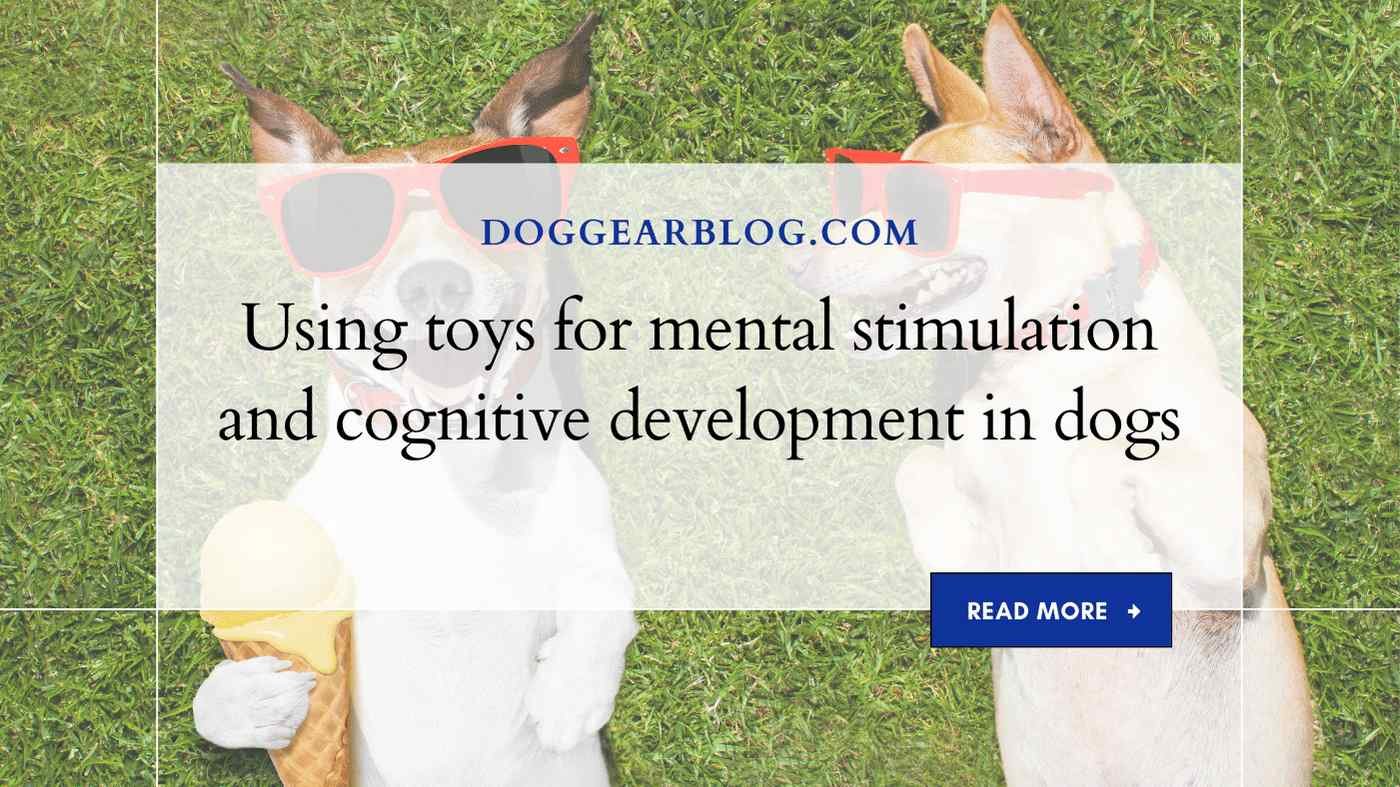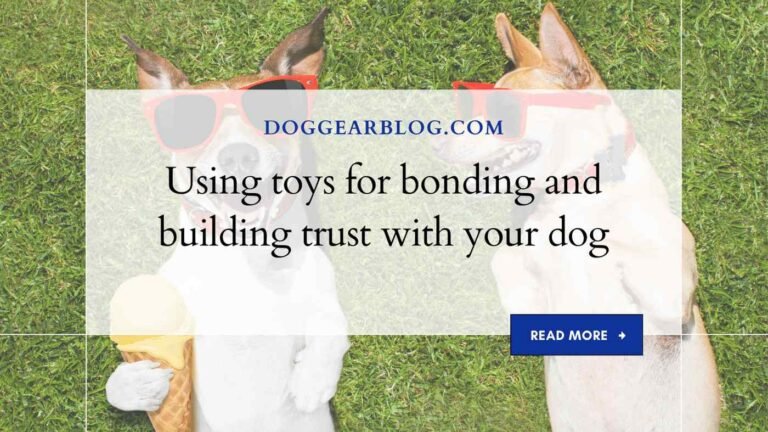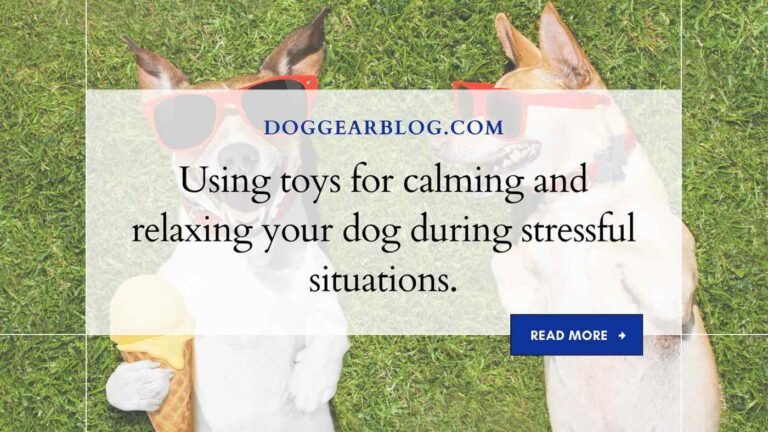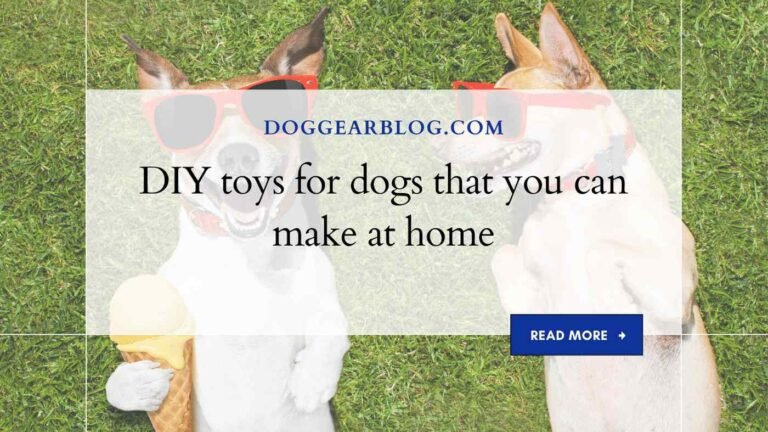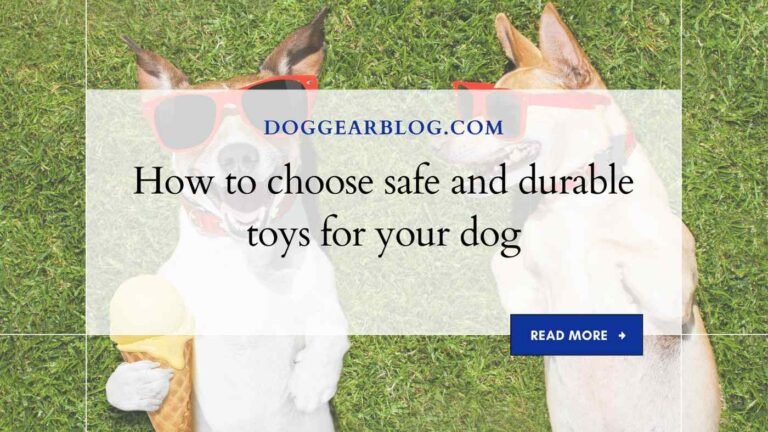Using toys for mental stimulation and cognitive development in dogs
Welcome to our newest blog post, all about using toys for mental stimulation and cognitive development in dogs! As pet owners, we all want our furry friends to be not only physically healthy but also mentally stimulated. Just like humans, dogs need mental exercises too! And what better way to do it than through playtime with their favorite toys?
In today’s post, we’ll explore the benefits of using toys as a tool for fostering brainpower in dogs while providing fantastic recommendations on some of the best toys out there. From puzzle games to interactive fetcher balls – let’s dive right into the world of canine mind-bending fun!
Types of Toys for Mental Stimulation and Cognitive Development in Dogs

There are many different types of toys that can be used for mental stimulation and cognitive development in dogs. Some of the most popular include puzzle toys, interactive games, and training aids.
Puzzle toys are a great way to keep your dog entertained and mentally stimulated. They come in many different shapes and sizes, and can be designed to be easy or challenging for your dog to put together. Some examples of popular puzzle toys include Kongs, Marbles, and Tug Toys.
Interactive games are another great way to keep your dog mentally stimulated. These games require your dog to use his brain to figure out how to get something he wants. Some examples of popular interactive games include Hide-and-Seek, Catch-the-Cat, and Doggy Paddle Fish.
Training aids are also a great way to keep your dog cognitively stimulating. These tools help you teach your dog new tricks or exercises. Training aids can come in the form of clicker trainers, food dispensers that dispense treats when your dog does what you want them to do, or poles that you attach toy balls or other objects to so that they have to retrieve them.
The key to using any type of toy for mental stimulation and cognitive development in your dog is to make sure that it is safe, durable, and enjoyable for him.
Things to Avoid When Purchasing Toys for Mental Stimulation and Cognitive Development in Dogs
- There are a few things to avoid when purchasing toys for mental stimulation and cognitive development in your dog. Some of the most common include toys that are too small, noisy, or made from materials that could be harmful if ingested.
Benefits of Playing with Toys for Mental Stimulation and Cognitive Development in Dogs

Toy-playing can help Behavioral issues such as destructive or fearful behavior, excessive chewing, and separation anxiety. Dogs who engage in cognitive activities (such as problem solving and learning) typically have better recall of training commands, are more active and interactive, and appear to be less likely to develop severe anxiety disorders.
According to a study published in the journal “PLoS One,” playing with toys also increased spatial memory in border collie puppies. The research team found that when given a puzzle toy to play with, the puppies learned how to find their way around an unfamiliar space faster than when they received no toy treatment. Interestingly, the puppies who had more cognitive stimulation from playing with toys did not show any differences in their ability to navigate a three-dimensional maze later on. This suggests that the pup’s early experiences during development account for some of the variability observed later on in life with regards to cognitive skills.
When selecting toys for your pet, consider their activity level and interests. Toys that are small enough for a dog to put into her mouth (e.g., beads) are likely to be helpful in improving dental health because they help clean teeth; larger items can be used as chew toys or carriers for treats while playing Hide games. While providing toys that promote cognitive stimulation is certainly one of the benefits, it’s also important to remember to provide enough variety in a dog’s playtime so that he doesn’t get bored or Devon Rex tired of one toy.
Remember to keep your pet safe by using common sense when giving toys to dogs. Avoid giving small, round objects that could be swallowed easily, and make sure toys are kept out of reach of small children.
How to Choose the Right Toy for Your Dog
There are many types of toys available on the market to choose from when it comes to mental stimulation and cognitive development in dogs. It is important to choose a toy that will be both entertaining and challenging for your pup. Difficult toys can help with problem-solving skills, while easy toys may provide too much boredom. Below is a list of some key factors to consider when selecting a toy for your dog:
Size
- When choosing a toy for your dog, make sure to choose one that is appropriate in size. Too large of a toy can be difficult for your pup to handle, while too small of a toy may not provide enough challenge.
Material
- Make sure you select a toy that is made from materials that are safe for your pup. Some common materials used in dog toys include rubber, fabric, and plastic. Be sure to read the product reviews before making a purchase to ensure you are selecting the right toy for your dog.
Durability
- Don’t forget to factor in durability when selecting a toy for your pup. Toys that are durable will last longer and be more fun for both you and your dog.
Nurturing
- Not every toy needs to be exciting or challenging for your dog. Some toys, such as chew toys, can serve as a nurturing tool for your pup. Select toys that are both entertaining and nurturing for your dog.
When selecting a toy for your dog, it is important to take into account size, material, durability, and nurturing. By considering these key factors, you can ensure that your pup has plenty of fun while also developing their cognitive skills.
What to Do if Your Dog Is Prohibitively Interested in a Toy
If your dog is prohibitively interested in a toy, there are a few things you can do to help keep him diverted. First, make sure the toy is something he’ll be interested in. If it’s something small and new, your dog may not be able to focus on it as long. Second, try to vary the toy so that your dog doesn’t get used to one type of toy being more exciting than another. Keep an eye on how much time your dog spends playing with the toy and remove it if he becomes too overexcited or destructive.
If you’re unable to get your dog to stop being interested in the toy, it may be necessary to take it away altogether. This can be a difficult decision, but if he’s becoming destructive or overexcited, it may be worth removing the toy before it becomes a bigger problem.
If all else fails, you may need to enlist the help of a professional. A trainer or behaviorist can help you train your dog not to be so eager to play with toys, and can also provide advice on how to manage excessive toy play when it does occur.
Whatever you do, be patience and understanding with your dog – he may just have a lot of energy and enthusiasm to burn off!
If you have any other questions or concerns about toy play, please feel free to ask!
Conclusion
Mental stimulation and cognitive development in dogs is crucial for their overall health, and the right toys can provide just that. Some of the best ways to stimulate your dog’s mind are by playing games, giving them puzzles to solve, providing them with treats as rewards for good behavior, and creating stimulating environments where they can run around and play.
Toys also allow you to connect with your dog on a deeper level, fostering an emotional bond that is beneficial both emotionally and mentally. When shopping for toys for your pup, be sure to choose something that will keep them entertained and challenged but also safe. Thank you for reading!
